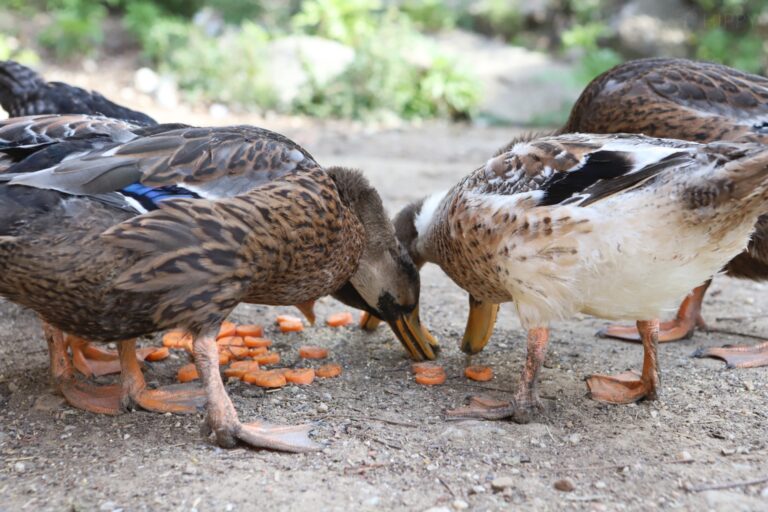If you’re going to care for animals of your own, especially livestock in any capacity, it pays to learn about their physiology, and part of that is learning the lingo.

For instance, looking at ducks, they don’t have jaws or beaks, they have bills. They don’t have arms, of course, they have wings. And moving down to the feet, what are they called? Do duck feet have a name?
Duck feet are just called feet, but their feet are webbed, and specifically palmate in configuration with webbing between the front toes.
Not much of a surprise here, or maybe it is; considering the other special anatomical terms that come up regularly when discussing ducks, it seems a little anticlimactic that their feet are exactly that and nothing more.
Still, there are a few interesting facts to learn about duck feet, and learn them you should! Keep reading and I’ll tell you more than you need to know just below.
Duck Feet Are Just Feet, Not Paws or Pads!
To be perfectly clear, “feet” or “foot” is the proper terminology for duck feet.
It’s a common term, yes, but even when you dig into the anatomical fineries of the structure they definitely qualify: it is a jointed, muscled appendage belonging to a vertebrate animal and used for weight-bearing and locomotion. A foot is a foot after all!
And of course, the foot of a duck is distinct from the paws of mammals, but you might sometimes hear them referred to as paddles, though this is only in the context of other aquatic and marine life that use their limbs for locomotion in the water.
This typically is only applied as a distinction between a foot, specifically a webbed foot, and a flipper which is structurally different. So, for the first and the last time, a duck foot is simply a foot.
What Are Duck’s Toes Called?
Likewise, a duck’s toes are just called toes.
Ducks and Other Waterfowl Have Palmate, or Webbed, Feet
Despite the common name, ducks and other waterfowl do have very special feet indeed. This is because of their webbing.
Specifically, ducks have palmate webbed feet describing the configuration of the membrane which extends only between the three front toes on the foot (so named because it resembles a palm).
A few duck species have lobate feet which have individual, oval membranes on each toe, but the membranes are not connected between the toes.
Other kinds of waterfowl have totipalmate or semipalmate feet, with the posterior toe being connected to the front three by a membrane on the inner side or the webbing extending only partially along the length of the front three toes respectively.
In any case, the webbing provides dramatically improved maneuverability and speed in the water because their feet act like oars or flippers.
This greater surface area imparts more force against a greater volume of water and subsequently allows ducks to move quite quickly on and below the surface.
Without those webbed feet, ducks would be drastically slower on the water and less able to get food, evade predators, or pursue mates. They are as much a part of a duck’s life as those waterproof feathers!
Do All Ducks Have Webbed Feet?
Yes. All ducks, geese, and swans have fully webbed feet, as do most other species of waterfowl. Grebes, gulls, terns, loons, skimmers, flamingos, boobies, pelicans, cormorants, frigatebirds, sandpipers, coots, and finfoots all have webbed feet of one kind or another.
And, as we’ve learned, all of those bird feet are just called feet!
Tim is a farm boy with vast experience on homesteads, and with survival and prepping. He lives a self-reliant lifestyle along with his aging mother in a quiet and very conservative little town in Ohio. He teaches folks about security, prepping and self-sufficiency not just through his witty writing, but also in person.
Find out more about Tim and the rest of the crew here.

The Question still remains. How do you get down off of an Elephant?
Answer: .kcud a fo ffo nwod teg uoy ,t’nac ouY